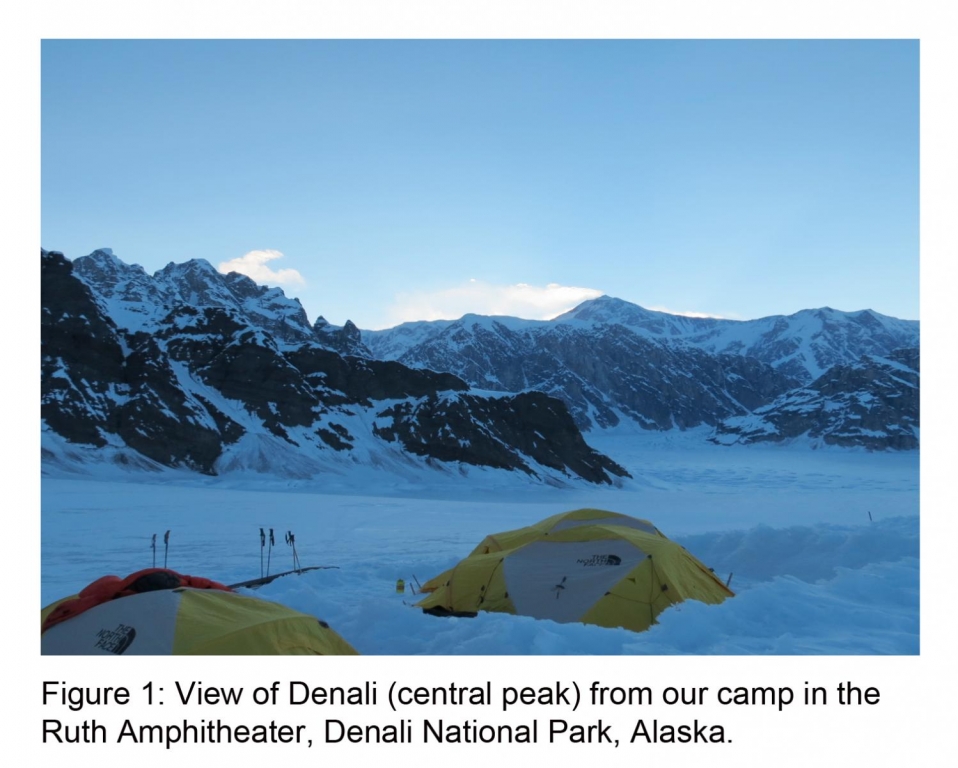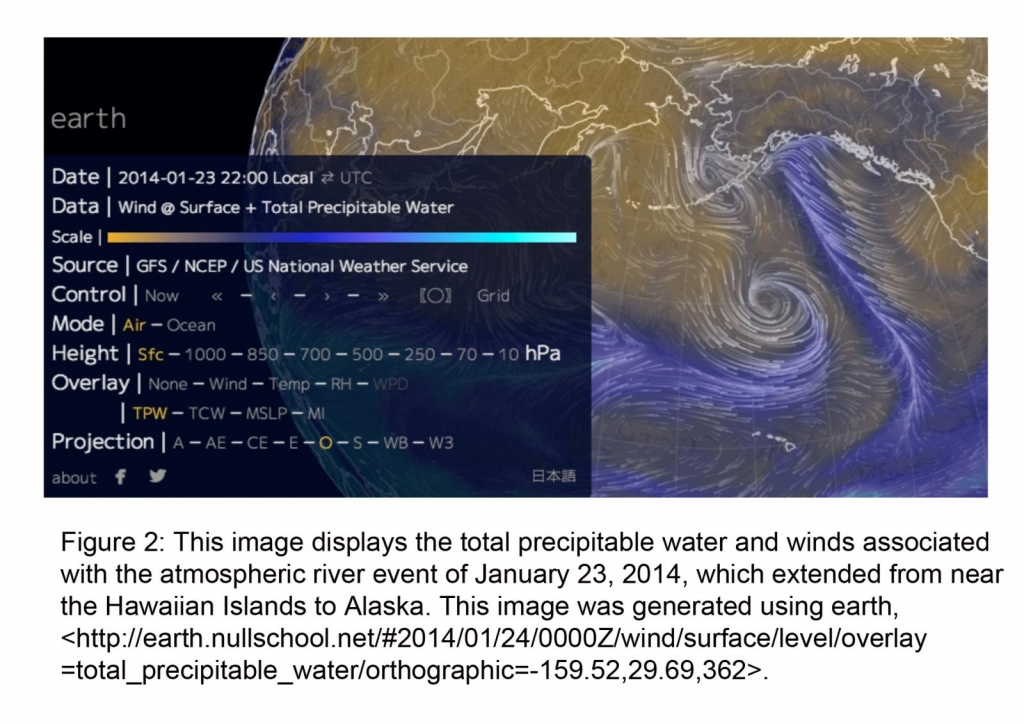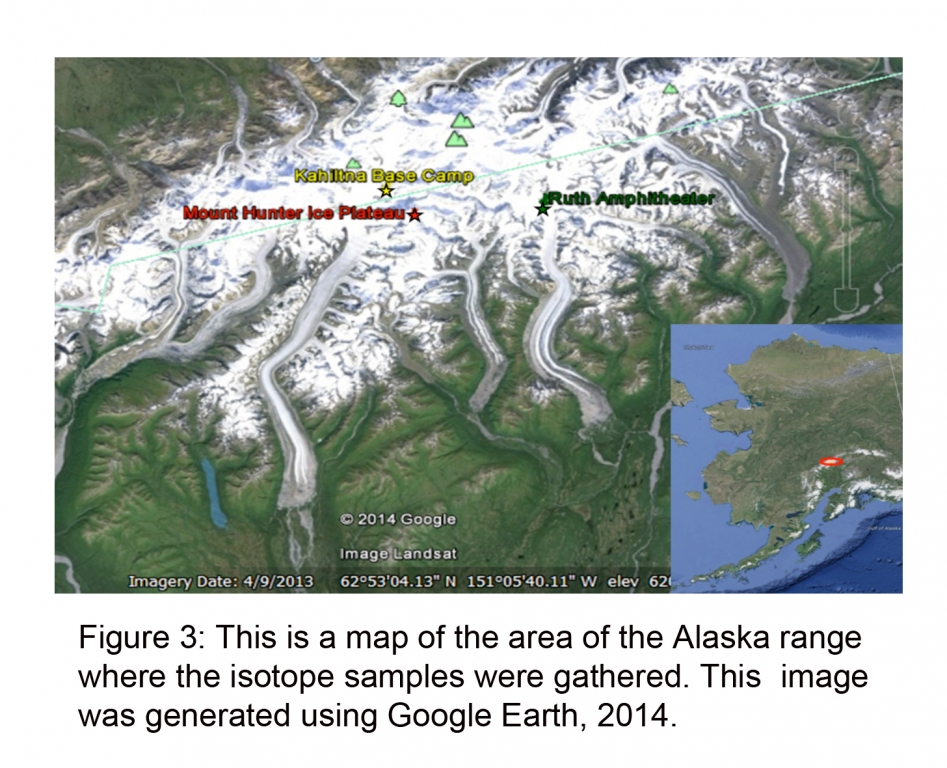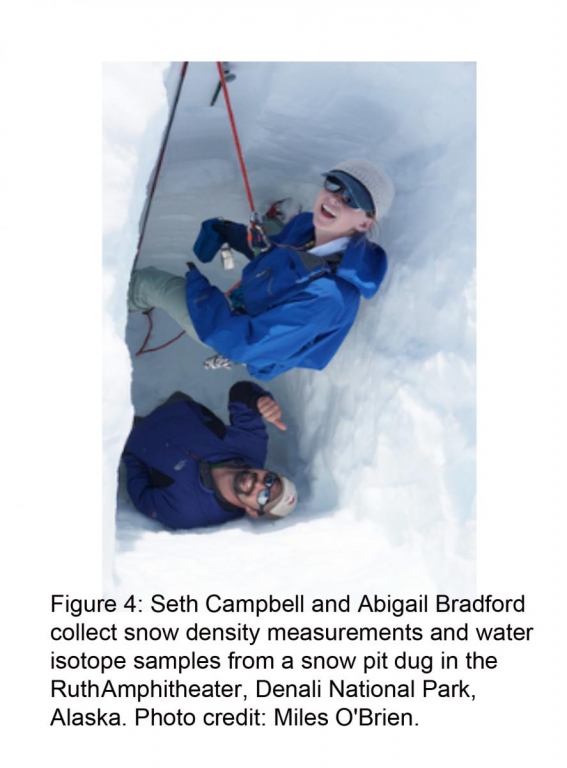Isotopic Signature of an Atmospheric River Event – Denali National Park, Alaska
Isotopic Signature of an Atmospheric River Event- Denali National Park, Alaska
Field Team Members: Karl Kreutz, Seth Campbell, Abigail Bradford
May 14, 2014 – May 30, 2014
Background
On January 23, 2014 the Alaska Range experienced heavy rains from an atmospheric river event originating in the Pacific Ocean, east of the Hawaiian Islands (NCDC, 2014). Atmospheric river events are characterized by narrowly concentrated, fast moving streams of moisture, as shown in Figure 2 below (NOAA, 2014). These events can have catastrophic effects, such as the huge avalanches that were partially triggered by the January, 2014 rains in Alaska (Masters, 2014). Atmospheric river events also provide much of the water supply for certain areas, however, such as the west coast of the continental U.S. (NOAA, 2014). Therefore, it is important to predict if and how the frequency of these events will change.
Water containing the heavier isotope of oxygen (O18) preferentially precipitates out of a storm first (Araguás-Araguás et al., 2000). Therefore, storms yield precipitation with an increasingly light isotope ratio (O18/O16) as they move further from their source. Since the moisture in atmospheric river systems is transported faster than in a typical storm, it has less time to precipitate out before reaching a given location. It is thought, therefore, that these events yield precipitation with uncharacteristically heavy isotopic signatures. If this is the case, the ice core record could be used to determine if the frequency of these events is different than it was in the past, which could inform us about how their frequency is changing and will change in the future.
Research Activities
In May, 2014 two sections of our research group gathered water samples from 4 snow pits in the Alaska Range, the locations of which are shown in Figure 3 below. Our team gathered samples from 2 snow pits on the Ruth Glacier. Samples were taken at increments of 0.5 m extending down 3.5 m in the snow pit dug on the eastern side of the Ruth Amphitheater and at increments of 0.1 m extending down 1.2 m in the pit dug on the western side of the Amphitheater. We also took ground penetrating radar (GPR) surveys of the Ruth Glacier at high and low frequencies to image the near surface and deep boundaries of the glacier, respectively. The second half of our expedition sampled a snow pit on the Mt. Hunter ice plateau at increments of 0.15 m, extending down 4.05 m. They also sampled a pit in the Kahiltna Glacier base camp every 0.15 m to a depth of 3 m.
Future Work
This fall I will be running the isotopes of the collected water samples using the Mass Spectrometer at UMaine’s Climate Change Institute. There were a few ice layers in this year’s snow pack, which represent either melt or rain events. Using the shallow GPR profiles we gathered, I will attempt to determine, which ice layer corresponds to the January 23 event based on its depth over the given cross-sections. I will compare the isotopic signature of this layer with the other samples to determine if it has a statistically distinct isotopic signature. I will also be utilizing weather data collected along the storms trajectory and climate reanalyses to estimate the amount of moisture that was taken up and precipitated out as the storm approached Alaska. I will perform the same estimation for an average, diffuse storm along a similar trajectory and compare the two analyses. This will help to determine if the faster transport of moisture in an atmospheric river event is outweighed by the heavier precipitation associated with these events, in terms of the isotopic signature of its precipitation.
Acknowledgements
I would like to thank Dan and Betty Churchill for their immense generosity in funding my travel, food and board during this field expedition. It was an invaluable experience, thank you.
Citations
Araguás-Araguás, L., K. Froehlich, and K. Rozanski, 2000, Deuterium and oxygen-18 isotope composition of precipitation and atmospheric moisture, Hydrological Processes, 14,1341-1355.
Masters, Jeff, Ph.D, Record Alaskan warmth and rains trigger huge avalanche that isolates Valdez, 2014, Weather Underground Blog, <http://www.wunderground.com/blog/JeffMasters/record-alaskan-warmth-and-rains-trigger-huge-avalanche-that-isolates-v >.
NCDC (National Climatic Data Center), Quality Controlled Local Climatological Data, 01/2014, Talkeetna Airport, AK, NOAA. <http://cdo.ncdc.noaa.gov/qclcd/QCLCD >.
NOAA (National Oceanic & Atmospheric Administration), Atmospheric River Information Page, 2014, Earth System Research Laboratory, Physical Sciences Division, <http://www.esrl.noaa.gov/psd/atmrivers/ >.






